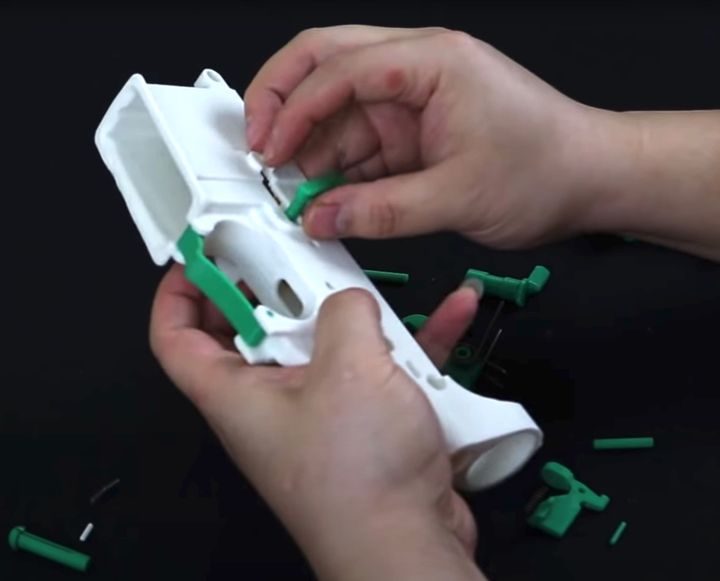
I’m reading an article on Hackaday about some folks experimenting with 3D printed gun parts and realized there could be a problem.
The Hackaday story highlights the efforts of some hobbyists to use 3D printing to understand how the mechanical aspects of historical firearms were made. The idea is to reproduce the components used in notable firearms of the past.
There’s quite a science involved in weaponry of this type, as inventors over many years developed new approaches that dramatically changed firearm performance. These innovations were introduced in firearms we now see as notable, mostly due to the effect the innovations had in the field. The work of these hobbyists is to replicate their mechanical workings using 3D printing.
To say it one way: They are 3D printing guns.
But hold on, these are most definitely not actual weapons. They cannot fire at all, and are made entirely of flimsy plastic. There is in fact no intention or possibility of EVER firing them. They are made solely for mechanical experimentation.
To say it another way: They are not 3D printing guns.
They are 3D printing objects whose shape and movements happen to be identical to actual historical weapons. But they’re not weapons.
So which is it?
You can see some of this work in this video:
This work seems entirely harmless and perhaps interesting, too. However, I have a suspicion this may generate some issues.
While the work of the hobbyists may be harmless, others may mistakenly perceive they are “3D printing guns”. In fact, they are 3D printing non-functional plastic gun replicas, little different from toy guns, albeit far more sophisticated in design. Even if that misconception was resolved, there’s another possible issue.
The 3D models used to perform these investigations are being used to produce thermoplastic replicas. But wait — those same 3D models could, in theory, be used to 3D print (or CNC) the same parts in metal. Those metal parts could then be post-processed and perhaps even assembled into a more functional metal replica.
Because of that possibility, is there some obligation to maintain the security of those files? Could they be sent to other countries in apparent violation of export bans? What if the files were posted publicly on a website? Is that considered exporting the files? (Hint: it was considered exporting in at least one similar case a few years ago.)
I don’t know the answers to these questions, but I do know that if I was working on this project, I’d want to make sure there was no laws or regulations being broken, even inadvertently.
Via Hackaday

Maybe 4-5 years ago some videos popped up showing police test firing ‘almost’ fully 3D printed pistols like the Liberator. If printed with the wrong settings, the plastic barrel would typically explode. I think many people saw these videos and think that to this day “3D printed” guns are not feasible.
It’s true that you can’t really fully print a gun, at least not economically. But in the US and probably elsewhere in the world, people have taken to printing gun parts instead, and purchasing other components to complete the build. Here’s a Hackaday article which shows this:
https://hackaday.com/2012/07/26/3d-printed-ar-15-lower-works/
In the US the “lower receiver” for an Ar15 is the only component which is actually considered a ‘firearm’. Whether that is good legislation or not is one thing, but nowadays there’s a growing community of people “gun-smithing” with 3D printers and making fully functional, un-serialized firearms in their sheds by printing the receivers and purchasing the rest of the parts online. And in most of the US that is totally legal.
Prior to 3D printers, anyone with the means and knowledge could already make their own unserialized firearm in the same way. But for most, running a 3D printer has a much lower barrier to entry than operating a mill.
I’m murky on the legality of files. I think that they are legal to own and distribute in most of the US because they are protected under free-speech. But that may be wrong.